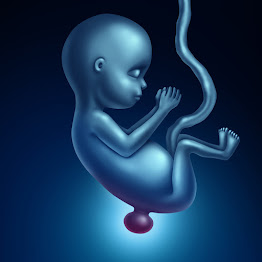Spina bifida may cause minimal symptoms or minor physical disabiliies. But severe spina bifida can lead to more significant physical disabilities. Severity is affected by:
- The size and location of the neural tube defect
- Whether skin covers the affectd area
- Which spinal nerves come out of the affected area of spinal cord
 |
| Spina bifida |
This list of possile complications may seem overwhelming, but not all children with spina bifida get all of these complications. And these conditions can be treated.
- Walking and mobility problems: The nerves that control the leg muscles don't work properly below the area of the spina bifida defect.This can cause muscle weakness of the legs and sometimes paralysis. Whether a child can walk typically depends on where the defect is, its size, and the care received before and after birth.
- Orthopedic complications: Children with myelomeningocele can have a variety of problems in the legs and spine because of weak muscles in the leg and back. The types of problems depend on the location of the defect. Possible problems include orthopedic issues such as:
- Curved spine (scoliosis)
- Abnormal growth
- Dislocation of the hip
- Bone and joint deformities
- Muscle contractures
- Bowel and bladder problems: Nerves that supply the bladder and bowels usually don't work properly when children have myelomenigocele.This is beacuse the nerves that suplly the bowel and bladder come from the lowest level of the spinal cord.
- Accumulation of fluid in brain (hydrocephalus) : Babies born with myelomeningocele commonly experience accumulation of fluid in the brain, a condition knowa as hydrocephalus.
- Shunt malfunction: Shunts placed in the brain to treat hydrocephalus can stop working or become infected. Warning signs may vary. Some of the warning signs of a shunt that is not working include:
- Headaches
- Vomiting
- Sleepiness
- Irritabily
- Swealing or redness along the shunt
- Confusion
- Changes in the eyes (fixed downward gaze)
- Trouble feeding
- Seizures
- Chiari malformation type II: Chiari malformation type II is a common brain abnormality in children with the myelomeningocele type of spina bifida. The brainstem, or lowest part of the brain above the spinal cord, is elongated and positioned lower than usual. This can cause problems with breathing and swallowing. Rarely, compression on this area of the brian occurs and surgery is needed to releive the presssure.
- Infection in the tissue surrounding the brain (meningitis): Some babies with myelomeningocele may develop meningitis, an infection in the tissues surroundig the brain. This potentially life-threatening infection may cause brain injury.
- Tethered spinal cord: Tethered spinal cord results when the spinal nerves bind to the scar where the defect was closed surgically.This spinal cord is less able to grow as the child grows.This progressive tethering can cause loss of muscle function to the legs, bowel or bladder.Surgery can limit the degree of disability.
- Sleep-disordered breathing: Both children and adults with spina bifida, particularly myelomeningocele, may have sleep apnea or other sleep disorders. Assessemnet for a sleep disorder in those with myelomeningocele helps detect sleep-disorded breathing, such as sleep apnea, which warrants treatment to improve health and qualiity of life.
- Skin problems: Children with spina bifida may get wounds on their feet, legs, buttocks or back.They can't feel when they a blister or sore. Sores or blisters can turn into deep wounds or foot infections that are hard to treat. Children with myelomeningocele have a higher risk of wounds problems in casts.
- Latex allergy: Children with spina bifida have a higher risk of latex allergy, an allergic reaction to natural rubber or latex products. Latex allergy may cause rash, sneezing, iching, watery eyes and a runny nose. It can also cause anaphylaxis, a potentially life-threatening condition in which swelling of the face and airways can make breathing difficult. So, it is best to use latex-free gloves and equipment at delivery time and when caring for a child with spina bifida.
- Other complications: More problems may arise as children with spina bifida get older, such as urinary tract infections, gastrointestinal (GI) disorders and depression. Children with myelomeningocele may develop learning disabilities, such as problems paying attention, and difficulty learning reading and math.




Comments
Post a Comment